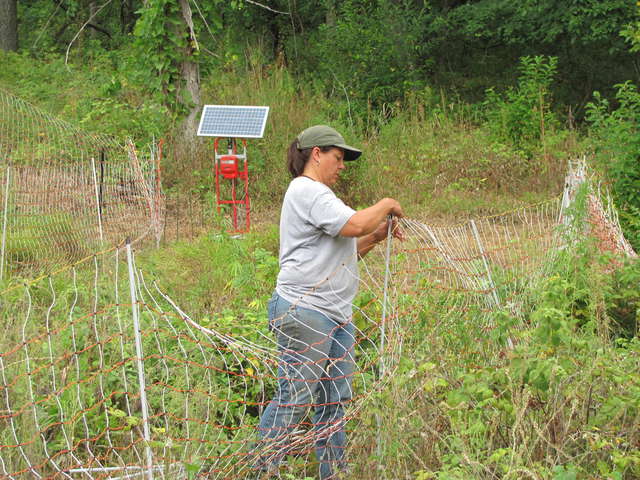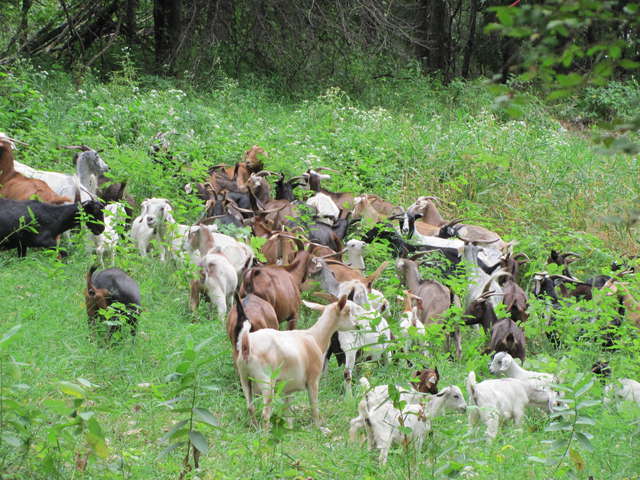Baaaad news for buckthorn

Lynnette Nadeau of Goat Peak Ranch secures fencing that will keep the goats safe as they feed upon buckthorn.
Photo: FMR
From across the land the cries could be heard The goats are coming! The goats are coming! Or maybe that was a different story...
Anyway, the goats DID come, to penned enclosures at Gores Pool Wildlife Management Area (WMA) in Hastings. Working closely with Bob Fashingbauer, the WMA manager, FMR recruited the help of about 100 goats to help reduce common buckthorn, which has infested the site.
Tended daily by their owners at Goat Peak Ranch in Redwing, the goats chewed through about five acres of buckthorn in two weeks. They left behind nothing! Even seedling buckthorn were eaten, leaving the site virtually bare. While simply eating the plants one time wont kill them, it will set them back, especially during this drought period. Funding for this work was provided by the Lessard-Sams Outdoor Heritage Fund.

Goats from Goat Peak Ranch munching on the troublesome invasive plant, buckthorn.
Photo: FMR
Buckthorn prevents many other plant species from growing, and thus reduces habitat value for wildlife that depend on the diversity of native flora. Using goats as a tool for buckthorn control has been gaining popularity in recent years, and helps to reduce the amount of chemicals needed. The goats will eat almost any plant, though they dont care for grasses and a few other things, so they may not be suitable for sites that have a lot of desirable plants. In essence, they function similar to a mowing or a controlled burn, though each process has somewhat different effects.
FMR will continue to monitor the effects of the browsing at Gores, and compare it to simply mowing. Herbicide will likely be used to follow-up on the browsing this fall. We are also experimenting with goats in the part of Pine Bend Natural Area owned by Flint Hills Resources in Rosemount, in partnership with FHR and Great River Greening. Hopefully this will become a valuable new method for buckthorn control.